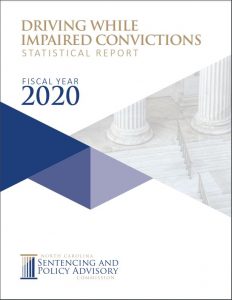Conviction of a host of criminal offenses (many, but not all involving vehicles) may lead to the revocation of a person’s driver’s license by the North Carolina Division of Motor Vehicles (NCDMV). See, e.g., G.S. 20-13.2, 20-16, 20-17, 20-17.3. For certain types of revocations when statutory criteria are satisfied, a state court judge may issue a limited driving privilege that authorizes a person to drive during certain hours for limited purposes, notwithstanding the revocation of the person’s driver’s license. See, e.g., G.S. 20-179.3. Questions occasionally arise about whether the issuance of such a privilege authorizes driving in another state.
Motor Vehicles
Greenville’s Red Light Camera Program Ruled Unconstitutional
Author’s Note: The opinion discussed below was reversed in relevant part by Fearrington v. City of Greenville, ___ N.C. ___, 900 S.E.2d 851 (2024).
Two men cited in separate instances for failing to stop at red light camera locations in Greenville, NC filed declaratory judgment actions arguing that the city’s red light camera enforcement program violated the state constitution. Among other claims, the men argued that the program violated the Fines and Forfeitures Clause contained in Article IX, Section 7 of the North Carolina Constitution because the local school board received less than the clear proceeds of the civil penalties the city collected for violations. The Court of Appeals in Fearrington v. City of Greenville, 2022 NCCOA 158, __ N.C. App. __ (2022), agreed, holding that the funding framework violated the state constitution.
Fatal Crashes Increase in 2020 and 2021
The negative impacts of the pandemic are far-reaching and well-documented. They include death, illness, disruptions in school and work, strains on the health care system, and backlogs in the courts. But if I had been asked back in March 2020 to predict the impact the pandemic would have on traffic safety, I would have guessed incorrectly. I might have thought that since fewer people would be regularly driving to offices during predictable times of the day, traffic fatalities would decline. I would have been wrong. NC DOT analysis of traffic crashes during the pandemic revealed that while vehicle crashes decreased dramatically following the Governor’s declaration of a state of emergency in March 2020 and continued to remain below 2019 and prior year averages for the rest of the year, fatal crashes (which fortunately are a small subset – less than 1 percent — of total crashes) did not precipitously decline. Instead, they surpassed 2019 numbers and the five-year average during several weeks in the spring, summer and fall of 2020.
As it turns out, this upward trend in fatal crashes was not limited to 2020 or to North Carolina. The National Highway Traffic Safety Administration (NHTSA) published in October 2021 a statistical projection of traffic fatalities nationwide for the first half of that year. See NHTSA, National Center for Statistics and Analysis, Early Estimate of Motor Vehicle Traffic Fatalities for the First Half (January – June) of 2021, Traffic Safety Facts: Crash – Stats (October 2021) [hereinafter Early Estimate]. That projection showed a nearly 20 percent increase in fatalities in motor vehicle crashes from the first half of 2020. The calculation – that 20,160 people died in motor vehicle traffic crashes from January to June 2021 – represents the highest number of fatalities during the first half of a year since 2006 and the highest half-year percentage increase since 1979, when the Fatality Analysis Reporting System began recording data. NHTSA estimates that fatalities increased in all ten of its regions. The 10 percent increase in North Carolina’s region, Region 3, was second-to-lowest, with the highest increase (26 percent) in Region 10, which includes Alaska, Washington, and other Northwestern states.
S.L. 2021-182 Amends Ignition Interlock Requirements
S.L. 2021-182 (S 183) enacted significant changes to the laws that require certain persons convicted of driving while impaired to have ignition interlock installed on their vehicles. Those changes include: (1) eliminating the 45-day delay for a limited driving privilege to become effective, (2) requiring that ignition interlock be installed only on the vehicle or vehicles the person drives rather than all the vehicles the person owns, (3) requiring that ignition interlock vendors waive a portion of ignition interlock costs for qualified persons, (4) removing the time and purpose restrictions on a limited driving privilege if a person has ignition interlock, (5) changing the alcohol concentration restrictions for ignition interlock from 0.04 and 0.00 to a universal standard of 0.02; and (6) directing a legislative committee to study ignition interlock expansion and related issues.
Report from Sentencing Commission Analyzes DWI Dispositions in 2020
Recently I was asked to teach about sentencing in impaired driving cases. I thought the audience might want to know not just the law governing sentencing for impaired driving but also what sentences typically are imposed in those cases. For the latter, I turned to the North Carolina Sentencing and Policy Advisory Commission’s Fiscal Year 2020 Statistical Report on Driving While Impaired convictions. There one can find information about the percentages of impaired driving convictions sentenced at each of the six levels of punishment under G.S. 20-179, the types of sentences imposed by sentencing level, average sentence length for active and suspended sentences, and the average days of special probation (imprisonment) ordered by punishment level — among other data. Read on for highlights from the report, which contains data about convictions under G.S. 20-179 from July 1, 2019 through June 30, 2020.
2021 Legislation Amends Rules for Modified Utility Vehicles
Last year, I wrote about new legislation defining and regulating modified utility vehicles. The legislature returned to that subject again this year in S.L. 2021-33 (S 241), amending that definition and modifying the rules governing the use of such vehicles.
Applying the Statute of Limitations to Failure to Appear for an Implied Consent Offense
Nearly 15 years ago, the General Assembly created the misdemeanor offense of failing to appear for two years for an implied consent offense. See S.L. 2006-253 (enacting new G.S. 20-28(a3), effective for offenses committed on or after December 1, 2006). The new provision was proposed by the Governor’s Task Force on Driving While Impaired in order to impose special sanctions for a person who fails to appear in court for this particular kind of motor vehicle offense. Those sanctions include driver’s license revocation for a person convicted of a violation of G.S. 20-28(a3)(2).
In the early years after the statute was enacted, there were many questions about which offenses it applied to. Offenses charged before December 1, 2004 for which the person had already failed to appear for two years before the statute’s effective date? Arguably not, for ex post facto reasons, as Jeff opined here. What about offenses charged a bit later for which the defendant already had failed to appear before December 1, 2006? Perhaps not, given the presumption of prospective application, as I wrote here. More recently questions have arisen about how to calculate the two-year statute of limitations for such an offense. Suppose, for example, a defendant was charged with DWI on January 1, 2017. The defendant failed to appear in court. On June 2, 2021, the State charged the defendant with failure to appear for two years after being charged with an implied consent offense. Does the two-year statute of limitations in G.S. 15-1 bar the prosecution?
Vehicle Crashes During COVID
NC DOT has published its analysis of data regarding vehicle crashes during the spread of COVID-19 throughout our state. The results may surprise you.
Fielding a Few Questions About License Revocations for Failure to Appear and Comply
I wrote last week about the expiration of emergency orders that had temporarily halted clerks from reporting to DMV a person’s failure to appear or to pay monies owed in a Chapter 20 criminal or infraction case. When DMV receives such a report, it imposes a license revocation pursuant to G.S. 20-24.1, unless the person does one of the following before the revocation goes into effect:
- disposes of the charge;
- demonstrates that he or she is not the person charged with the offense;
- pays the penalty, fine, or costs ordered by the court; or
- demonstrates to the court that his failure to pay the penalty, fine, or costs was not willful and that he is making a good faith effort to pay or that the penalty, fine, or costs should be remitted.
Someone asked me recently about these sanctions for nonappearance and nonpayment — or incentives for appearance and payment — depending upon one’s perspective. How many revocations are imposed for failures to appear and failures to pay? Do other states have similar license revocation schemes? What other ways exist to incentivize appearance and payment?
2020 Motor Vehicle Legislation of Interest — To Me and the Kids
It is somewhat rare for one of my children to know more about recently enacted legislation than I do. But it happened a few weeks ago when the General Assembly adopted legislation that allows my sixteen-year-old to get his driver’s license without taking a road test. This post will cover that legislation and other recent amendments to the state’s motor vehicle laws.